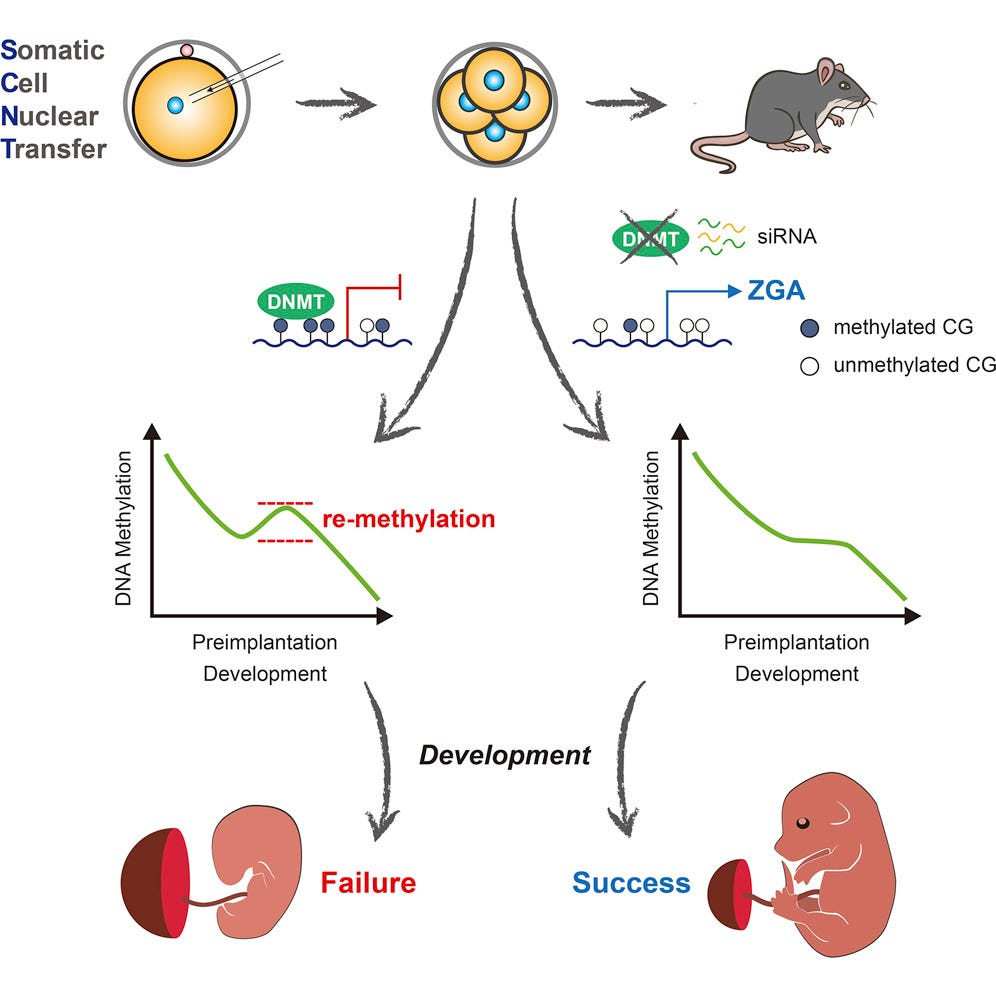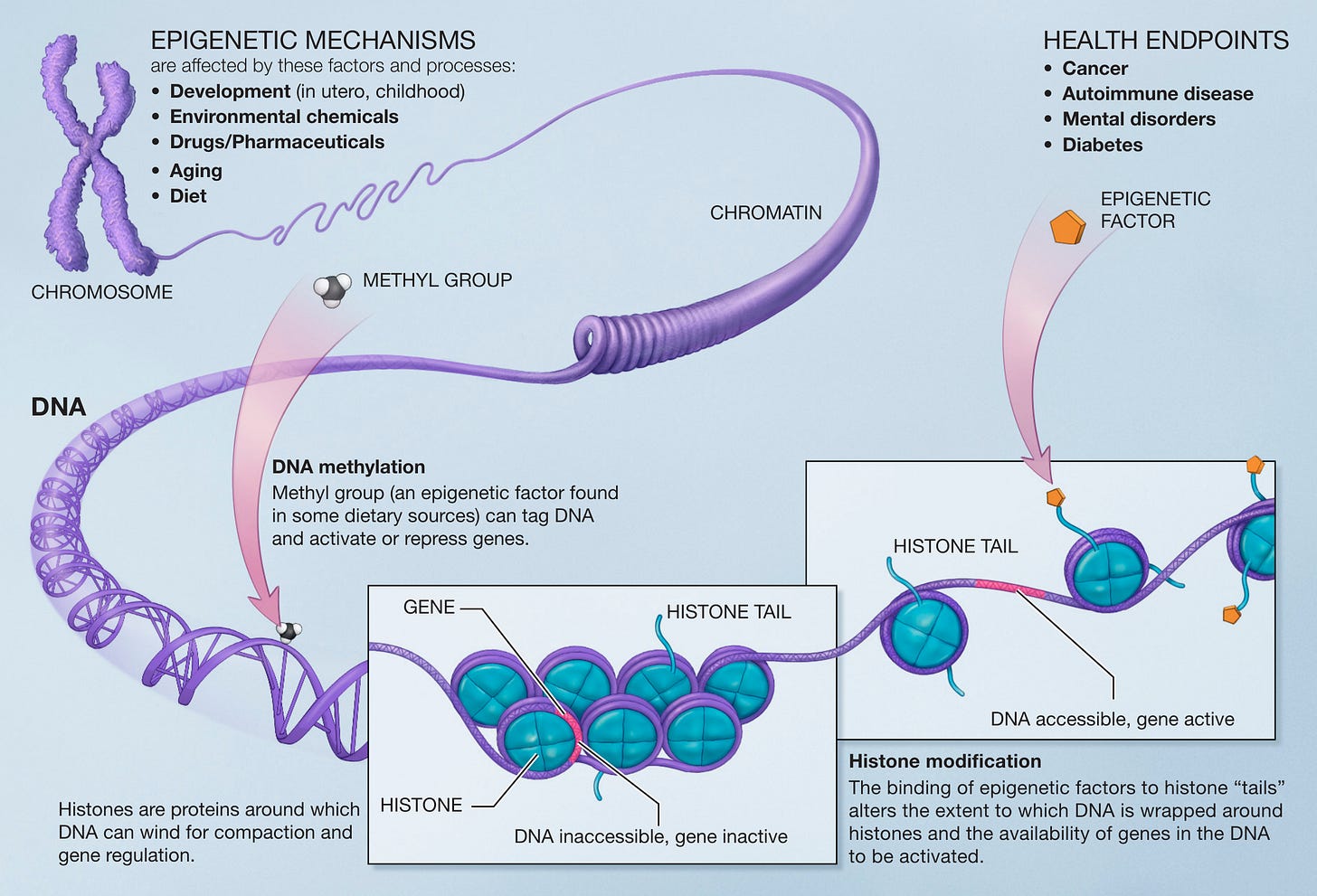Improving Cloning Efficiency
The most investigated method of cloning is Somatic Cell Nuclear Transfer (SCNT), where the nucleus of a somatic cell (any cell in the body except sperm and egg cells) is transferred into an egg cell that has had its own nucleus removed. This reprograms the somatic cell nucleus to become totipotent, meaning it has the potential to develop into any type of cell in the body, and can thus create a whole new organism. However, this process is far from perfect, and many cloned embryos fail to develop fully. But why is this the case?
A recent study[1] published in the journal Cell Stem Cell has shed some light on this mystery. The researchers found that a process called DNA re-methylation is a major barrier to the successful development of cloned embryos.
DNA methylation is a process that controls gene activity. In normal development, certain genes are turned on or off at specific times to ensure proper growth. However, in cloned embryos, the researchers found that DNA re-methylation was occurring abnormally, leading to the incorrect activation of certain genes. This disrupted the normal development of the cloned embryos, causing many to fail to develop fully.
So, what can be done to improve the success rate of cloning? The researchers found that by inhibiting the enzymes responsible for DNA re-methylation, they could improve the development of cloned embryos. This suggests that controlling DNA re-methylation could be a key to improving the efficiency of cloning.
But the researchers didn't stop there. They also found that combining this approach with the overexpression of certain proteins that remove other types of epigenetic marks (chemical changes to the DNA molecule that can also control gene activity) led to even greater improvements in the development of cloned embryos. This suggests that a multi-pronged approach that tackles multiple barriers to cloning could be the most effective strategy.
This research is a significant step forward in our understanding of the barriers to successful cloning. However, there is still much to learn. For example, how can we best control DNA re-methylation in a practical setting? And are there other barriers to cloning that we have yet to discover? As scientists continue to explore these questions, we can look forward to new advances in cloning technology that could have wide-ranging applications, from animal husbandry to human therapeutic cloning.
In conclusion, while cloning may seem like something out of a science fiction movie, it is a very real and rapidly advancing field of research. And with these new insights into the role of DNA re-methylation in cloning, we are one step closer to understanding and overcoming the challenges of creating cloned organisms.
References:
Inhibition of Aberrant DNA Re-methylation Improves Post-implantation Development of Somatic Cell Nuclear Transfer Embryos - Rui Gao, et al https://doi.org/10.1016/j.stem.2018.07.017
Image source:https://en.wikipedia.org/wiki/Epigenetics





